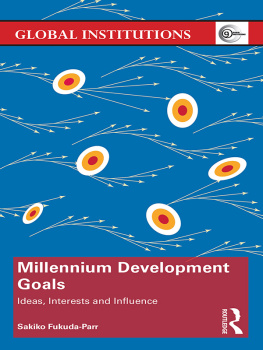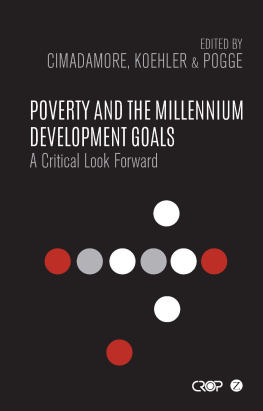Sikkim Human Development Report 2014
Sikkim Human Development Report 2014
Expanding Opportunities, Promoting Sustainability
First published 2015
by Routledge
1 Jai Singh Road, New Delhi 110001, India
by Routledge
2 Park Square, Milton Park, Abingdon, Oxon OX14 4RN
and by Routledge
711 Third Avenue, New York, NY 10017
First issued in hardback 2017
Routledge is an imprint of the Taylor & Francis Group, an informa business
2015 Government of Sikkim, India
The right of Government of Sikkim, India to be identified as author of this work has been asserted in accordance with sections 77 and 78 of the Copyright, Designs and Patents Act 1988.
All rights reserved. No part of this book may be reprinted or reproduced or utilized in any form or by any electronic, mechanical, or other means, now known or hereafter invented, including photocopying and recording, or in any information storage or retrieval system, without permission in writing from the publishers.
Trademark notice: Product or corporate names may be trademarks or registered trademarks, and are used only for identification and explanation without intent to infringe.
British Library Cataloguing-in-Publication Data
A catalogue record for this book is available from the British Library
Library of Congress Cataloging-in-Publication Data
A catalog record has been requested for this book.
ISBN 13: 978-1-138-41702-1 (hbk)
ISBN 13: 978-1-138-92606-6 (pbk)
Typeset in Granjon LT Std 11.5/15pt by Glyph Graphics Private Limited Delhi 110 096
S IKKIMS FIRST HUMAN DEVELOPMENT REPORT (HDR) was released in 2001. In that report, for which I had also written the foreword, I had acknowledged the need to take cognisance of our weaknesses and identify areas where we needed to work harder. The mood at that time was more sombre since we were on a steep learning curve. We needed to know more about our situation and understand the many gaps that existed. More than a decade has elapsed between then and now. It is time to construct a new balance sheet of human development in Sikkim. The human development lens allows us to take stock of the developmental achievements and identify the challenges that lie ahead.
An Advisory Council, chaired by me, was constituted to oversee the process of preparing Sikkims second HDR. The HDR project team was set up within the Chief Ministers Office. Dr A. K. Shiva Kumar, noted developmental economist and a Member of the National Advisory Council (NAC), readily agreed to guide this process in an honorary capacity. This is indeed a stellar contribution to our state and I would like to acknowledge this at the outset. The report has been prepared by a totally local team guided by Dr A. K. Shiva Kumar. This has led to immense learning about the scope and the manner in which HDRs are prepareda process that has now been internalised within the people of Sikkim.
I have been Chief Minister of the state since 1994. It is heartening to note the tremendous improvement in all the areas of Sikkims human development. This is something which I find most satisfying personally. My colleagues and I have led from the front. We have had our share of trials and tribulations. However, it is encouraging to note that there is light at the end of the tunnel. The people of Sikkim have seen remarkable progresstheir progress. Our government has facilitated this process of transformation. We have tried many innovative ways of taking the government and decision-making to the grass roots. One of these has been my village-to-village tour of the state. Many gaps in implementation were addressed and new work was sanctioned during this Many officers accompanying us were delighted with the outcomes of the tour and were sensitised by the whole experience.
There have been many upheavals in the course of preparing this report. Chief among them was the 18 September 2011 earthquake which put our plans on hold for a considerable period of time. However, we have had the benefit of many other studies in the meantime, including the study of the states public policy history for the period 1994 to the present time.
This report reflects the great transformation in human development that the people of Sikkim have experienced over the last two decades, more particularly over the last twelve years. It presents many positive findings as well as many other developments that inspire us. We find a visible drop in poverty numbers. Extreme poverty is virtually absent in the state. Almost all children are in school. These are all good signs. We have also captured first-hand the voices of young people. We have listened to their various concerns, aspirations and expectations. These are reflected in the report quite comprehensively. On the other hand, we continue to face challenges in the areas of connectivity, delivery of public services, delays in infrastructure projects and making gram sabhas the central pillar of planning.
There are miles to go and this is acknowledged and discussed in the report in the last chapter on the way forward. I can assure everyone that we as a government will take measures to ensure that we fulfil the aspirations of the people of Sikkim. Their dreams are our dreams and we need to find the means to achieve them.
Finally, we must acknowledge with gratitude all those who have been part of this process. I would like to again express my thanks to Dr A. K. Shiva Kumar and his associates for making the experience of preparing this report truly memorable. Many background papers were prepared by different authors. The Advisory Council that met several times in the course of making this report provided valuable inputs. Our officers and researchers from Sikkim have imbibed the work and culture of making such a report. I am sure they will be able to do this independently in the future.
It has truly been an exercise well worth it. I am immensely pleased to dedicate this report to the people of Sikkim.

Pawan Chamling
Chief Minister of Sikkim
February 2014
H UMAN DEVELOPMENT REPORTS GO BEYOND the conventional measures of economic prosperity, bringing new research and evidence-based policies that put people at the centre of development. The Sikkim Human Development Report 2014 highlights remarkable progress made in one of the smallest and the least populated states in India, and underlines the challenges ahead in sustaining and accelerating progress.
Soon after the first Sikkim HDR was published in 2001, the government consciously stepped up social spending from 27 per cent in 2001 to 37 per cent in 201213. Sikkims average annual increases on its budget allocations over this period were 12 per cent for education, and for the health sector 18 per cent. This undoubtedly led to improvements in peoples lives, as documented in this report. Sikkim now has the third lowest levels of malnutrition in the country, following Arunachal Pradesh and Nagaland. The state has achieved universal sanitation coverage for all households. It has the best gender performance among the north-eastern states, with female labour force participation at 40 per cent, significantly higher than the national average of 26 per cent. Between 2004 and 2011 there was a 70 per cent reduction in the numbers of the poor, and in 2011, Sikkim reported the lowest percentage of the population below the national poverty line, at 8 per cent. Primary and upper primary enrolment is near universal; over 85 percent children below 2 years were fully immunized in 2009; and institutional delivery stood at 81 per cent in 2011.










